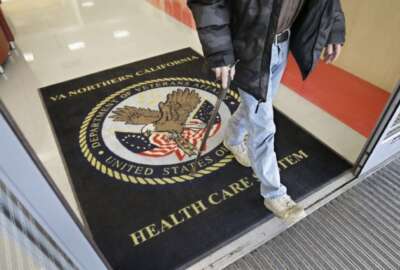

In this white paper, Deloitte's Sarah Williamson examines how government can make America's roads safer to navigate by applying the scientific data of how people...
By Sarah Williamson
Deloitte
This white paper is one of six written by Deloitte describing inexpensive, simple solutions to some of society’s most seemingly intractable problems. These solutions don’t involve billion-dollar investments or comprehensive tax reform. Instead, they’re based on behavioral insights that seek to explain the way we make decisions, whether consciously or unconsciously.
Americans travel nearly 3 trillion vehicle miles per year. As of 2011, we have over 257 million registered vehicles and over 211 million licensed drivers. But that same year, 22,448 vehicle drivers and occupants died in crashes, along with 4,612 motorcyclists, and 5,307 pedestrians and cyclists. While total vehicle- related fatalities have fortunately been on a downward trend for nearly a decade, these accidents didn’t just cost lives. They also created nearly $200 billion in property damage and $99 billion in medical costs. We may be tempted to think that our driving behaviors affect only ourselves, but our travel habits and driving speeds clearly have a much broader, societal effect that government has an incentive to influence. So what if there were simple ways to address the gridlock, the fatalities, the accident-prone behavior and make our nation’s roads safer to navigate? Below are three simple ideas that could help.
Potential Solutions
Target education campaigns to the behavior of an at-risk population. In 2000, the UK Department for Transport (DfT) set ambitious goals to reduce the number of deaths and serious injuries for pedestrians struck on roads by 50 percent for children and 40 percent overall by 2010. DfT began by conducting research on the characteristics of drivers causing these accidents, finding that many younger, urban drivers were not convinced that driving at 40 mph was more dangerous than the 30 mph speed limit on many roads. These drivers also said, however, they would feel extreme guilt if they struck a pedestrian.
So DfT launched the THINK! advertising campaign with two emotional television ads featuring children speaking directly to the audience about the injuries associated with being struck. The advertisements relied on the finding that a pedestrian struck at 40 mph has an 80 percent chance of death while one struck at 30 mph has an 80 percent chance of survival. This messaging was designed to specifically appeal to the target driver segment, and the ads were aired at times when the young, urban audience would likely be watching.
As a result, DfT was able to decrease child deaths by 10% more than their target, two full years earlier. Estimates reveal that for every £1 spent on the ads, £9.36 of public money for treatment was actually saved. By targeting the beliefs and motivations of particular groups at risk for negative behavior, DfT focused on what worked, rather than wasting energy and resources on convincing the inconvincible.
Use environmental triggers and visual cues to slow speeds. Millions of Americans speed every day. Speeding is particularly common in areas with wide roads and few landmarks, conditions which impair our perception of scale and speed. So why not introduce a few environmental triggers and visual reminders? These types of interventions cost cities and states pennies on the dollar to implement and have promising potential for decreasing injury and accidents.
Chicago’s Lake Shore Drive, previously one of the city’s most dangerous roads, is home to a visual illusion created by a series of white lines painted across the roadway in decreasing intervals as drivers approach a treacherous curve. The decreasing space between the lines gives drivers the sensation that their speed is increasing (even though it isn’t), prompting them to slow down and take the curve at a safer speed1. In the 6-month period after the lines were introduced, there were 36% fewer crashes.
When feedback speed limit signs, those that tell drivers their current speed in flashing lights, were erected in addition to the standard speed limit signage in Bellevue, Washington, driving speeds were almost immediately reduced by 5mph on average. Results also show that the signs actually become more effective over time, even as motorists became accustomed to driving past them. Public perception of the signs was almost wholly positive and requests for additional signs have grown steadily. Signs like these are successful because they publicly, conspicuously, and immediately remind us of our risky behavior in contrast to the recommended speed, and tell us that it has been observed. Whether there is additional enforcement (a police officer around the corner) or not, feedback signs provide a targeted reminder to check our speed and not rely on our faulty judgments of others’ behavior.
Encourage use of public transportation. Safer roadways can also be achieved by encouraging people to stay off the roads – to take public transportation, to walk, to bicycle. Seeking to both increase sustainability and recoup investments made on public transportation, the UK Department for Transport partnered with localities to pilot several different behavioral insights across the country.
For the minimal amount of money spent in each locality universally the use of public transportation rose, small businesses grew, and speeding, traffic injuries, and traffic fatalities all decreased. Surveys revealed that not only did people feel safer, they were actually happier, underscoring the importance of public infrastructure on our decisions.
Moving Forward
The insights and related behavioral interventions described in this series are designed to be implemented quickly – they don’t necessitate an act of congress or laborious re-writing of existing policy. Many require a small budget but have great impact. However, even evidence-based changes like those above can have unintended consequences. That’s why we recommend coupling implementation with rigorous but rapid performance evaluation. Rapid testing and agile evaluation can enable your agency to refine strategy and measure the positive impact that behavioral insights can generate to drive mission achievement.
As used in this document, “Deloitte” means Deloitte Consulting LLP, a subsidiary of Deloitte LLP. Please see www.deloitte.com/us/about for a detailed description of the legal structure of Deloitte LLP and its subsidiaries. Certain services may not be available to attest clients under the rules and regulations of public accounting.
Read all six of Deloitte’s white papers on behavioral insights.
The sentence that can save government $45 million
Behavioral insights for responsible financial behavior
Behavioral insights for sustainable behavior
Behavioral insights for healthy behavior
1. Thaler, R. & C. Sunstein. (2008). Nudge: Improving decisions about health, wealth, and happiness. New Haven: Yale University Press. Image from page 37.↩
Copyright © 2025 Federal News Network. All rights reserved. This website is not intended for users located within the European Economic Area.


